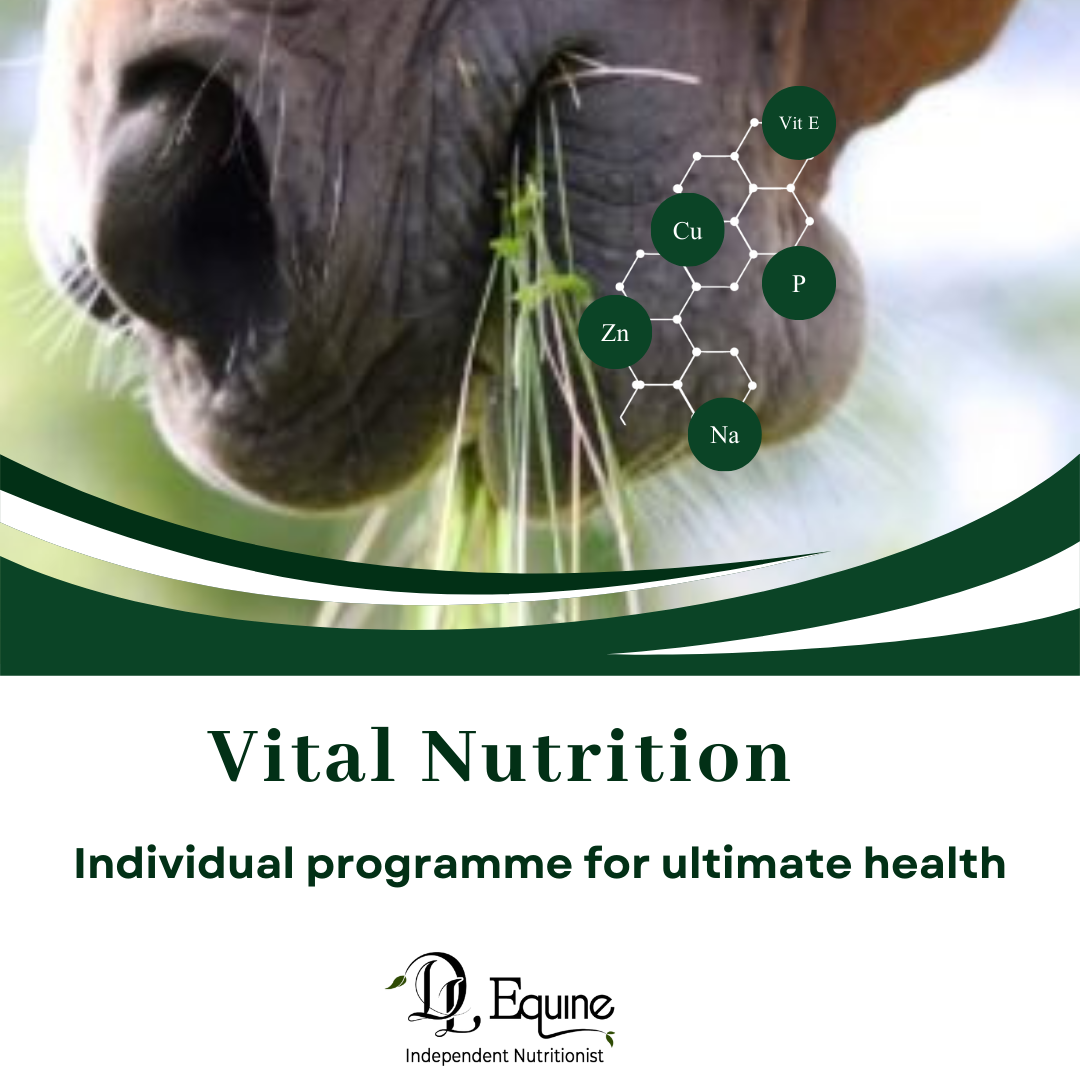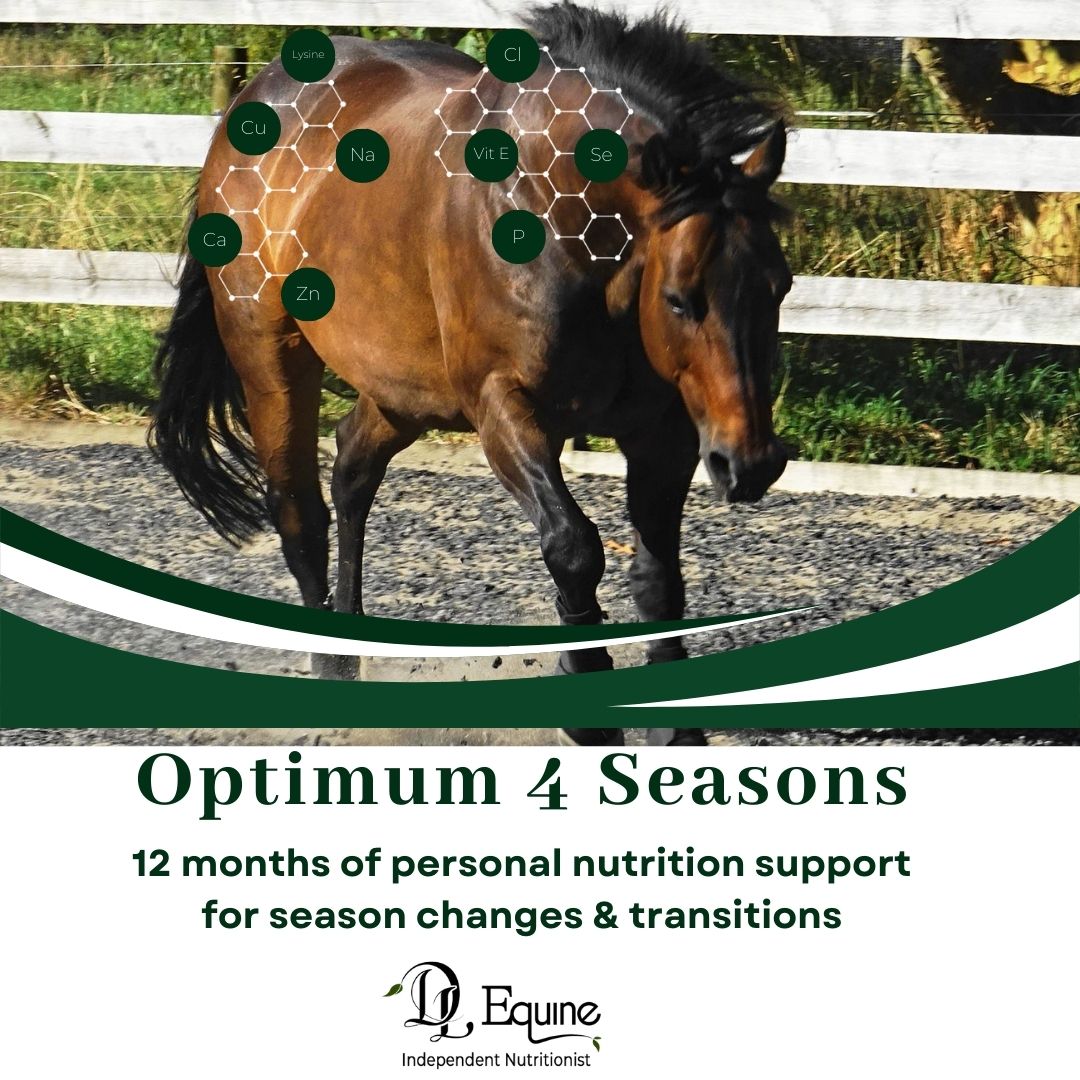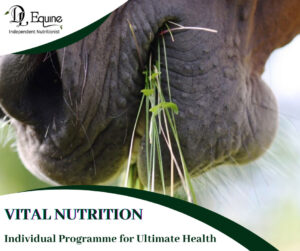Spring (or Autumn) has begun! I know because a week of sun and a little (or lot) of rain has meant our grass is very green! This new growth pasture can present some unique problems for horses.
As the amount of pasture changes, so does your horse’s need for supplementary fibre feed. Failure to adjust your horse’s feed correctly with changing seasons could result in an overweight, hyperactive horse or underweight, tired horse.
Spring and Autumn are well known as ‘danger times’ for pasture associated laminitis, colic and unwanted behaviour. So, what is it about pastures growing during these seasons that make them unique and how can they be managed?
Fibre:
Lush spring pastures can contain as little as 15% dry matter meaning they are up to 85% water. Because of the extremely high-water content of these pastures’ horses can rarely eat enough pasture to ingest their required amount of dry matter feed. A horse should be consuming around 1.5% – 2% of its body weight in dry matter per day.
There is very little fibre present in pastures during these early growth stages. Yet there is also high amounts of starch and sugar. Fibre is critically important for the normal functioning of the gastrointestinal tract, fueling those hind gut micrboes, which in turn create energy for the horses body. This results in a healthier gut, happier horse and the formation of good soild manure. The high starch also flows very quickly thru the GI tract reaching the hind gut, reulting in an increase in the numbers of acid producing bacteria, making the hind gut an acidic place which overwhelms the other good bacteria.
Horses that are not given an additional source of fibre when on lush new grass may experience diarrhoea and are at a higher risk of colic associated with a low gut fill. Other health issues that occur due to an acidic hinnd gut is hind gut acidosis, leaky gut syndrom, a decrease in immunity and also potentially laminitis.
Energy:
On the other side of the coin the pasture alone can often go close to meeting a performance horse’s requirement for energy particularly those in light exercise. When these high-quality pastures are available, there can be little to no need to feed additional high energy grain feeds.
It can be a difficult thing to manage for some of us with little control over paddocks and grazing.
What can you do:
The best thing to do is to restrict grass for example strip graze slowly into fresh paddocks if you can.
Fee the fiber NOW. Low energy chaff and plenty of hay and other sources such as beet pulp etc. The extra fibre in these feeds will improve gut fill and manure consistency reducing the risk of colic and diarrhoea and also help your horse to consume the calories he needs when pasture water content is very high.
Reduce the sweet feed or concentrate feed.
When adjusting feed amounts up and down to match pasture conditions, be aware of the diet’s mineral balance because controlling energy intake by reducing the amount of complete feed you are giving may be inadvertently causing mineral deficiencies that will affect your horse’s health.
Remember to feed a vitamin mineral supplement.
If you choose to add extra Magnesium remember that research findings conclude that this extra amount will only work for very short period of time because the horse will begin ‘dumping’ the extra Magnesium in their urine, similar to what they do with excess Calcium. Therefore, you can safely add up to 20 mg/kg of Body Weight/day, starting 30 days before these symptoms are known to begin, and continue for 30 days after the grass has slowed in its growth rate. It is unwise to add multiple products of extra minerals to your horse as this unbalances very fine ratios required in the horses system.
Add a well researched prebiotic which will stimulate the good bacteria that live in the horses gut.
For some horses a cup of dried chamomile flowers added into your daily feed can soothe both the gut and the spring behavior.
Take-Home Message
For optimum horse gut health, our feeding and management practices should mimic nature as much as possible because unnatural conditions can adversely impact horses’ GI tract health and function.
This means paying attention to what we feed (nutrient and fibre levels) and how we feed, in terms of meal size, frequency, temperature, season, grass growth.
The key to knowing when to adjust the amount of feed you are feeding according to pasture conditions is regularly body condition score your horse to detect changes in body fat condition and taking careful note of your horse’s behaviour.
Feed by weight, not by volume. A scoop or handful can hold a greater weight of pellets than of forage feed, so the horse getting “three scoops” of feed may be getting more or less than the optimum amount. See D L Equine Nutrition Programmes for a carefully formulated diet.






